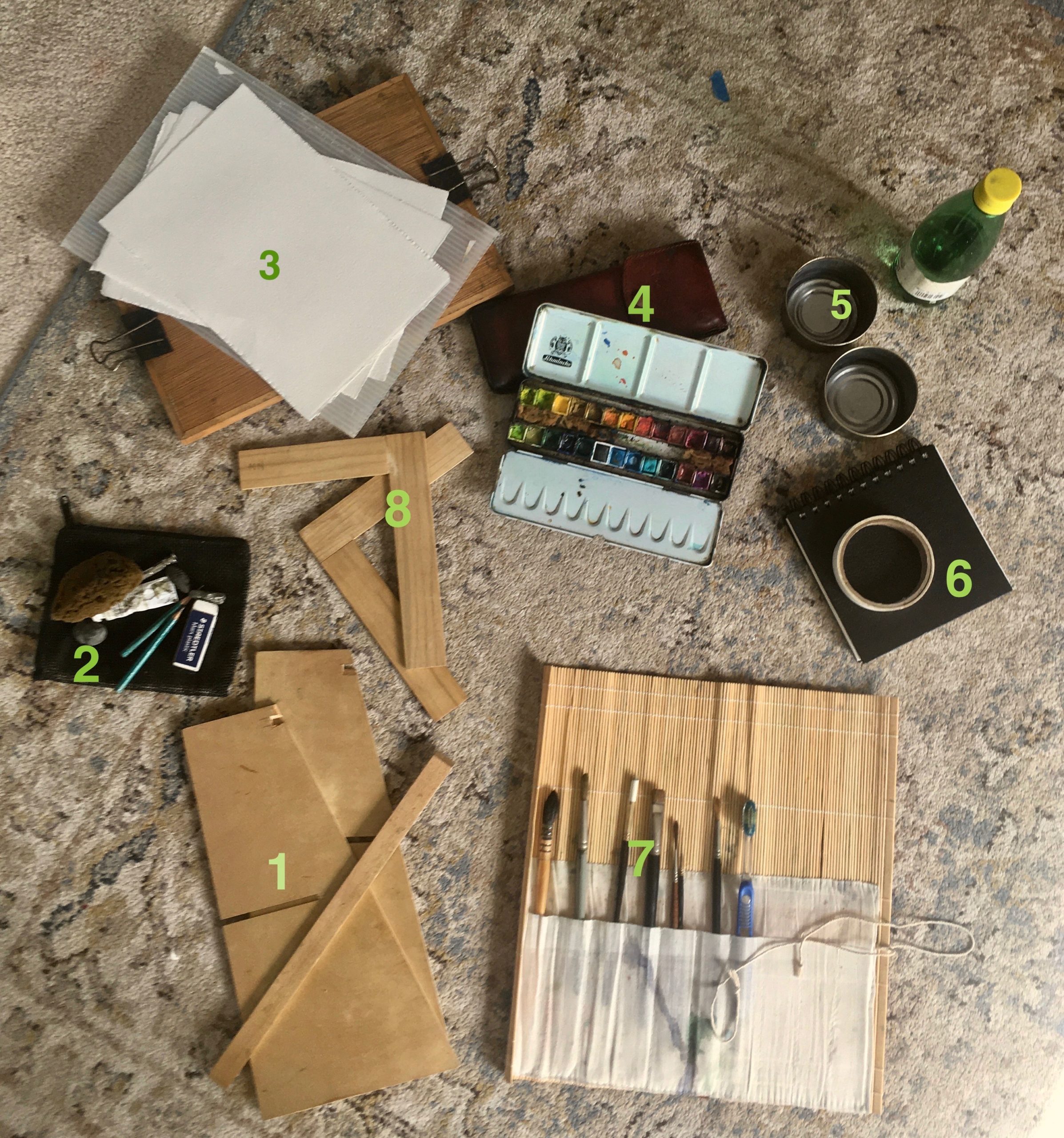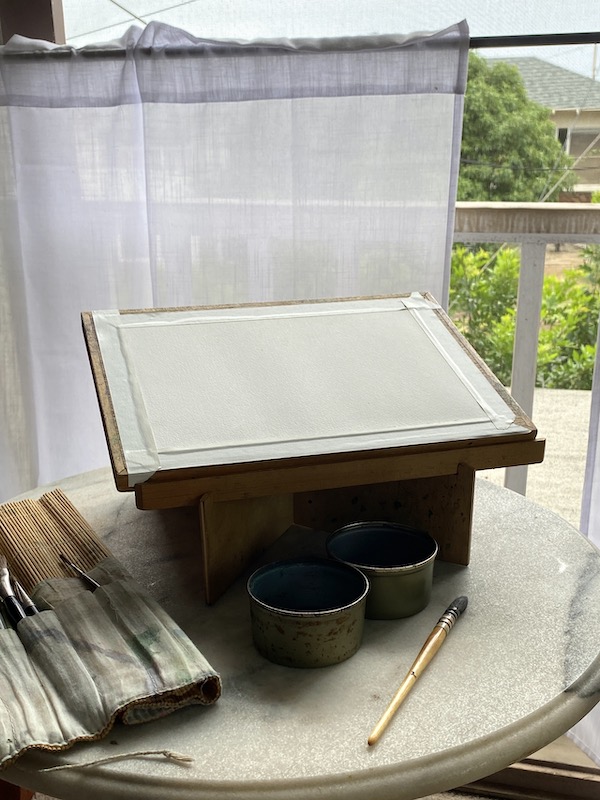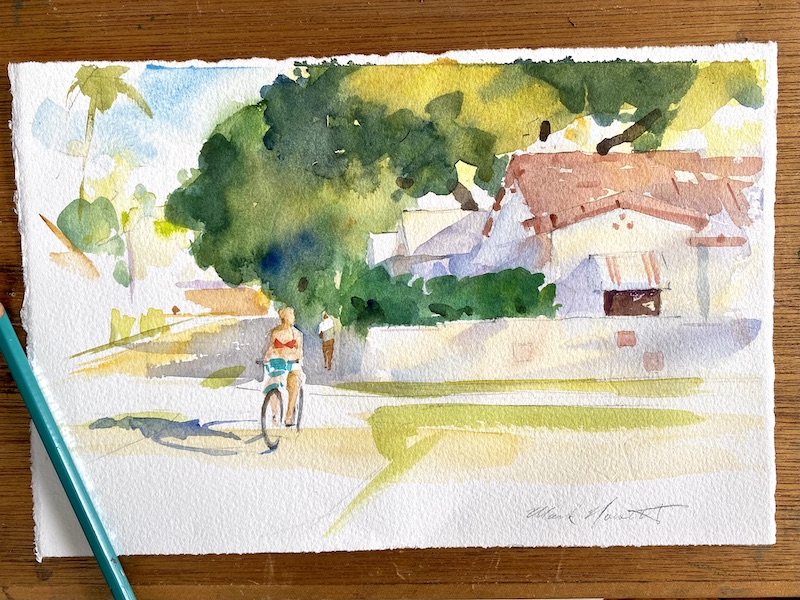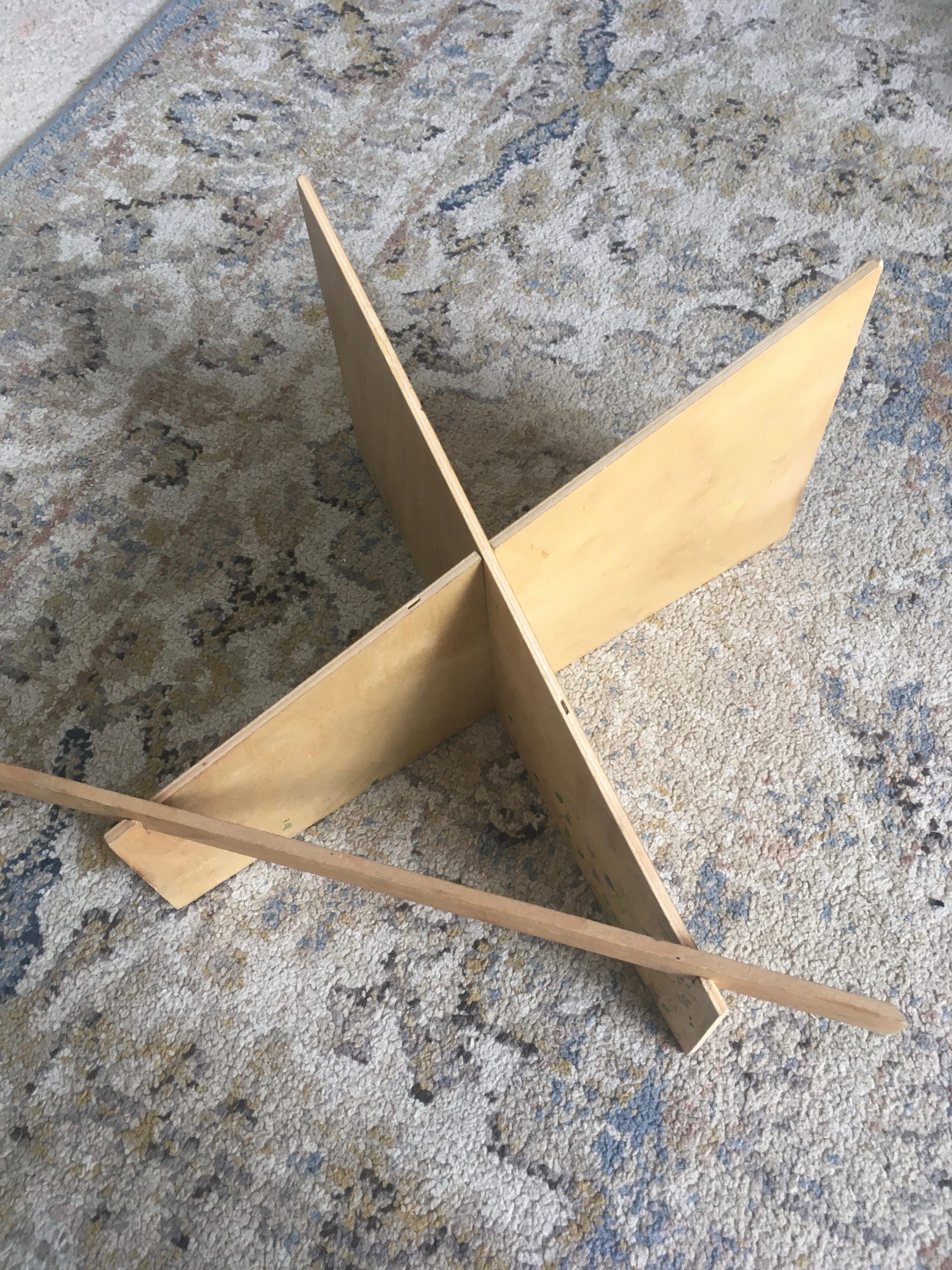The desire to create a very portable, yet complete watercolor kit has been a real side-passion. Happily, I’ve finally arrived at something that solves both the weight/bulkiness issue, but not by limiting key materials that I feel are necessary to solve most of my watercolor challenges.
I like it so much that Id like to share it with you!
The mission
I love the little watercolor sketches, done as studies generally, that come out of the European tradition. My favorite quality is what I’ll describe as a grasp of the whole in a beautiful shorthand. There’s enough to them to transmit the idea, vision, a mood, but it’s done in exquisitely brief terms. Artists such as Streeton, Zbukvic, Fortuny (at times), Seago, and Fowkes (sorry, it sounds like a law firm, but look them up) are great examples of painters who have impressive small works done in that beautifully simple fashion.
I’ve wanted my own sketches to have that, and so in the last 2 years I’ve taken some time to wander about, sketching in watercolor with the particular goal of creating simple, small (but composed) looks at my everyday surroundings. Sometimes, these are springboards to later and deeper works, or serve towards trying out a neighborhood location and seeing how things go. But certainly, a big part of that mission included choosing the physical tools that will serve me without overloading. Some boundaries would be needed.
The parameters
These are the qualifiers I settled on…
The right pigment colors, in a suitable box, with a small but sufficient number of good quality brushes to accomplish my objectives. A wash, a flat, a pointed round or two, and a rigger should be enough, plus a safe storage that allowed for evaporation of any small amount of moisture left on the brushes.
A drawing board and paper storage for several 1/8 sheet (7.5 x 10″) sheets of watercolor paper.
An easel that is small enough and versatile enough to set up in unusual situations. On a bench, stair step, cafe chair, etc.
Small water container
Small drawing kit
and everything fitting into a small backpack.
The solution

Here’s what I’ve finally chosen and have been using…
1. A small wooden easel, from an old design discovered by a student of mine in a book written by John Pike. The original was cardboard and meant to be makeshift.
2. My drawing essentials…two sharpened pencils (4B or 6B, two, so there’s an immediate backup) pencil extender, small boxcutter for sharpening (not pictured). 2 erasers…a soft, kneaded and a firm plastic eraser, small sponge, a piece of white candle wax, opaque white pigment tube. The bag is zippered and plasticized mesh, so dirt/sand/grit doesn’t collect, a great feature.
3. Watercolor paper, torn to size. I use 1/8th sheet (7.5″ x 11″) Saunders or Arches 140# cold press paper. A sturdy wooden drawing board, and a piece of Coroplast cut to the size of the drawing board. Two binder clips to hold the package together, with the paper sandwiched between.
4. Watercolor box with half-pan pigments. A mix of some Schmincke, some Holbein, and Winsor & Newton. Necessary colors for me include Ultramarine Blue, Cobalt Blue, Cerulean Blue, Viridian, Hookers Green, Cadmium Lemon, Cadmium Yellow, Naples Yellow, Yellow Ochre, Raw Sienna, Cadmium Scarlet, Cadmium Orange, Light Red, Indian Red, Burnt Sienna, Permanent Alizarin Crimson (I’m considering a replacement currently), Permanent Rose, Raw Umber, and Ivory Black. Permanent white (tubed)
5) Small cans, one for clean and another for not-so-clean wash water. A plastic bottle for water.
6) Small sketchbook, spiral bound. Spiral is important because I want to be able to open the cover fully, and I have a clip to hold the paper in place in windy conditions. I always do a thumbnail drawing for every piece before beginning the painting… I think it’s a great means for selecting what you’re actually after before getting lost in painting decisions.
A roll of white artist’s tape.
7) Brushes: a small squirrel mop, a well-used old #7 sable round, a sable flat, a small sable round (for a crisp touch when needed), and a rigger for very fine lines. The tooth brush is mainly for cleaning the palette after the session.
8) Square Corners….this is an adjustable-window viewfinder, I find it very helpful during the sketchbook and composing stage. Referring back to the artists I mentioned admiring, that quality of fresh simplicity is from choices they make to eliminate the clutter and get to the bones of the composition and effect. Doing this visualization in advance, with square corners and my small sketch, helps me tremendously. Made of wood is ideal (for durability)… but cardboard works, too.
Setup
This little stand can be assembled in a moment, and holds the drawing board with paper at an angle that I prefer for washes and general work. It can sit on any level surface, and I’ve used it on staircases, cafe tables, folding stools, and chairs. Because it’s very compact when disassembled, I like having it along.

Where can this take us?
Speaking personally, some of my happiest hours as an artist have been while I’m out in the world, working in the midst of actual life, surrounded by actual people. I’m convinced that the work I do in those precious hours has a positive effect on my studio work.


